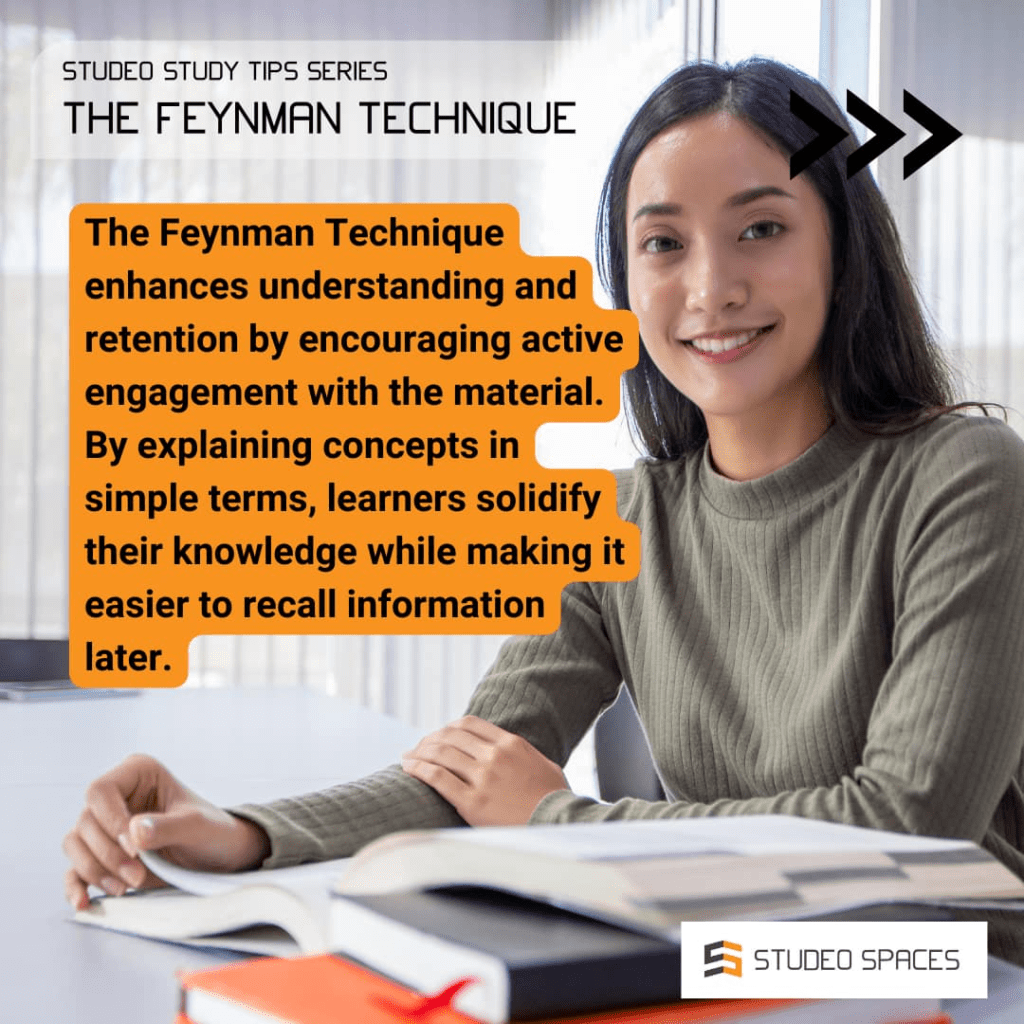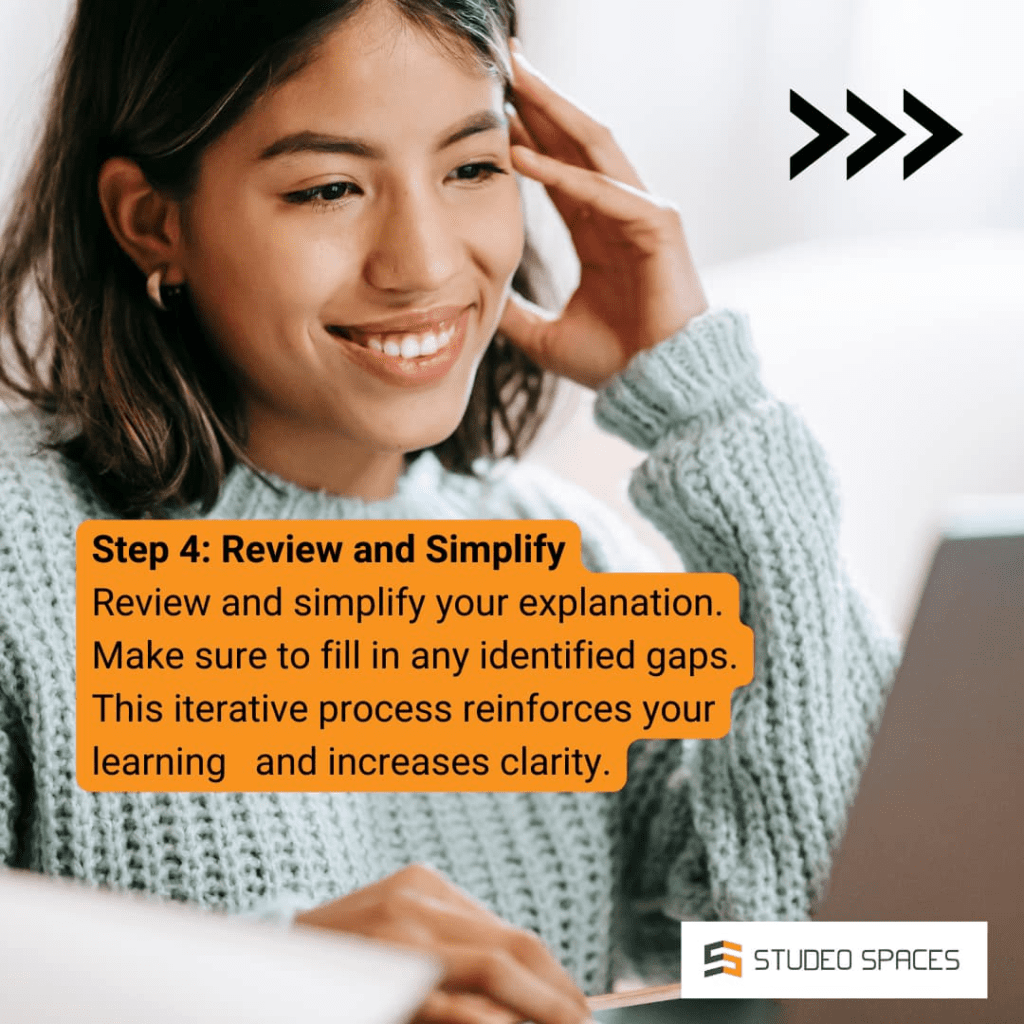
The Feynman Technique, developed by Nobel Prize-winning physicist Richard Feynman, is decisive for deep learning and understanding, not just memorization. This technique can be universally applied to any subject, whether you’re a student tackling coursework or a professional preparing for board exams. This post will guide you through the steps of the Feynman Technique and demonstrate how it can maximize productivity and results for students and board exam takers.

Who was Richard Feynman?
Richard Feynman was a renowned physicist who significantly contributed to quantum mechanics and particle physics. He was also a celebrated lecturer known for his ability to demystify complex topics. Feynman believed that anyone could learn anything through effort and a systematic approach. He wasn’t necessarily more intelligent than others, but he was exceptional in identifying gaps in his knowledge and working to understand concepts thoroughly. His learning process has been distilled into what is now known as the Feynman Technique.
The Feynman Technique: A Four-Step Process
The Feynman Technique is a four-step method that promotes active learning and proper comprehension. It moves beyond rote memorization and encourages a deeper engagement with the material. Here’s a detailed breakdown of each step:
Step 1: Select a Concept and Map Your Knowledge

- Start with a blank page: Choose a topic you want to learn and write it at the top of a blank page in a notebook. This could be a chapter from a textbook, a specific concept from a syllabus, or a skill you want to acquire.
- Jot down everything you know: Write down everything you already know about the topic as if you were explaining it to yourself. Use different colored pens for new information that you learn. This visualizes your understanding and helps you see where your knowledge is strong and lacking.
- Focus on one concept at a time: Choose an idea that is narrow enough to be covered in one or two study sessions. Avoid tackling overly broad topics, as this can overwhelm and burnout. For example, instead of “Evolutionary Science”, choose “Negative selection”.
- Acknowledge what you don’t know: Writing a topic on a blank page acknowledges that you are starting from scratch or at least filling in some blanks. This encourages a curiosity mindset.
This step is about acknowledging what you know and don’t know and being specific about your goals. This focused approach allows for deeper comprehension.
Step 2: Teach it to a 12-Year-Old

- Explain the concept in simple terms: Once you’ve mapped your initial knowledge, write out an explanation of the idea in your own words, as if you were teaching it to a child. The goal is to simplify complex concepts into language that a 12-year-old could understand. If you can’t explain it, you haven’t grasped it fully.
- Don’t use jargon or complex language: Avoid jargon or complicated terms. Focus on conveying the core ideas clearly and concisely.
- Please write it down: Writing helps you organize your thoughts and reveal gaps in your understanding. Clear writing makes mistakes hard to ignore.
- Teach it to yourself or someone else: Write a summary in your own words or explain the concept aloud. If possible, teach the concept to someone else. Teaching can reveal your misunderstandings when you have to articulate the ideas clearly.
- Seek feedback: If you teach a real person, they can give feedback and ask questions, helping you to identify areas where your understanding isn’t clear. This feedback is a crucial part of the learning process.
This step is where you begin to engage with the material actively. Whether to yourself or others, teaching forces you to connect and articulate the ideas.
Step 3: Review and Refine, Fill the Gaps
- Identify gaps in your knowledge: You will likely encounter gaps as you attempt to explain the concept. These gaps may be where you can’t explain something or get stuck.
- Return to the source material: When you find weak spots, return to your learning resources—textbooks, notes, and online sources. Study those sections until you can explain them.
- Re-write and refine your explanation: Once you understand the concept more clearly, rewrite your explanation to reflect your deeper comprehension. Repeat steps two and three until the idea is clear to you.
- Focus on weaknesses: Study the areas where your understanding is weak to turn them into areas of strength.
- Iterate: Learning is not a one-time process but rather an iterative process where you continuously revisit the material.
This step turns the learning process into an active cycle of identifying, filling, and solidifying your understanding of the subject.

Step 4: Test and Archive, Simplify and Create Analogies
- Test your understanding: Test your understanding of the topic by teaching it to someone else without using your notes. If you can explain it to someone else without looking at your notes, you will know you truly understand the topic.
- Simplify your explanation: Streamline your notes and explanations until the topic is so clear that it seems obvious.
- Create analogies: Think of analogies that make the concept more intuitive. Analogies help you recall and explain the idea more easily.
- Archive for review: Once satisfied, archive your simple explanation in a learning binder for periodic review. This helps ensure long-term retention.
- Break it down: Break down complex information into its simplest form—attempt to express it in a short and transparent way.
- Distill to the core: Simplify your initial explanation and refine your understanding by using simple analogies.
This step is about solidifying your understanding and making the concept accessible to anyone. The ability to simplify complex topics is a sign of deep learning.
How the Feynman Technique Benefits Students and Board Exam Aspirants
The Feynman Technique offers numerous benefits for students and those preparing for board exams:
- Deeper Understanding: It encourages proper comprehension rather than superficial memorization. By explaining concepts in simple terms, you’re forced to engage with the material at a deeper level.
- Active Learning: The technique promotes active learning rather than passive reading. It involves selecting topics, researching, writing, explaining, and refining, all active processes improving retention.
- Identification of Knowledge Gaps: Explaining concepts helps you identify gaps in your knowledge. This allows you to focus your study efforts on the areas where you need the most help.
- Improved Retention: The active and iterative nature of the Feynman Technique helps create new neural pathways, which will enhance memory and make connections between concepts easier.
- Builds Confidence: You develop confidence when you can explain a topic well. This can help you approach challenging subjects with a more positive mindset.
- Enhanced Problem-Solving: Creating your analogies helps you understand the core components of a concept and their relationships. This makes breaking down problems and approaching them from different angles easier.
- Long-Term Retention: The Feynman Technique helps you learn with intention, breaking down topics into digestible chunks, which improves your memory and reinforces learning.
Applying the Feynman Technique to Your Studies
To effectively use the Feynman Technique, consider these tips:
- Choose Specific Topics: Instead of studying an entire chapter, select one key concept at a time.
- Write Everything Down: Use a notebook or digital document to jot down everything you know. Writing it down helps to organize your thoughts and identify gaps in your understanding.
- Teach Yourself: Practice explaining concepts aloud without looking at your notes. If you get stuck, return to your resources.
- Get Feedback: Teach what you’ve learned to someone else and encourage them to ask questions.
- Use Multiple Sources: As you become more comfortable with a concept, consult different source materials.
- Be Iterative: Be prepared to return to the source materials and rewrite your explanations multiple times.
- Use Task Management Tools: Use tools like Todoist to schedule your learning sessions and break down the Feynman Technique into smaller tasks. You can generate a list of tasks based on topics you will learn and then for each topic, you can add the steps of the technique as subtasks.
- Pin Learning Projects: Use your task management tools to keep your learning at the top of your mind by pinning your learning projects.
- Be Patient: Learning takes time, and it is essential to be patient and persistent in your learning.
Conclusion
The Feynman Technique is a powerful tool for students and those preparing for board exams. It’s a simple yet effective method for deeply learning and internalizing any subject. Following the four steps of the technique, you can move beyond rote memorization and develop a deeper understanding of the material. This will improve your academic performance and help you become a more effective and confident learner. In the long run, this approach also enables you to become a life-long learner, which is increasingly essential in a rapidly changing world.
Frequently Asked Questions About the Feynman Technique
What is the Feynman Technique, and who developed it?
The Feynman Technique is a learning method developed by the renowned physicist Richard Feynman. It’s a four-step process to understand a subject rather than just memorize facts deeply. Feynman believed that if you cannot explain something, you don’t truly understand it. This method emphasizes active learning, simplification, and identifying knowledge gaps.
What are the four key steps of the Feynman Technique?
The Feynman Technique comprises these four steps:
Step 1: Select a Concept and Map Your Knowledge: Choose a specific topic you want to learn and write down everything you know about it on a blank page. Use different colors to track new information as you progress. This helps create a visual map of your current understanding.
Step 2: Teach it to a 12-Year-Old (or Someone Else): Explain the concept in simple terms that a child could understand. If you struggle to explain it simply, you haven’t fully grasped it. Writing your explanations down is crucial for organizing thoughts, identifying gaps, and facilitating future review.
Step 3: Review and Refine: Identify any areas where you struggled to explain the concept in Step 2 and revisit your learning materials, focusing specifically on those weak points. Rewrite your notes/explanations as your understanding improves.
Step 4: Test and Archive: Test your understanding by teaching the concept to someone else without using your notes. Then, create a simplified explanation for future review. This step reinforces learning and aids long-term retention.
Why is teaching someone else or explaining aloud to yourself so crucial in this technique?
Teaching or explaining aloud is critical because it forces you to engage with the material actively. It exposes gaps in your knowledge that you may not have recognized simply by reading or taking notes. When you explain something, you must organize your thoughts, connect ideas, and articulate concepts. This active process deepens understanding and helps solidify the information in your memory. You must refine your knowledge further if you can’t explain a concept.
How does writing relate to learning with the Feynman Technique?
Writing plays a key role in several steps of the Feynman Technique. In step one, you map out your knowledge by writing everything you know about a topic, and in steps two and three, writing forces you to put ideas into your own words rather than just transcribing. This helps identify knowledge gaps, organizes your thoughts, and provides a record for future reviews. Writing forces better thinking provides an organized structure, and reveals the gaps that are difficult to ignore when seen on paper.
What is the importance of simplifying explanations in this method?
Simplifying explanations, particularly to the point where a child can understand, is essential because it reveals the depth of your understanding. Jargon and complex language can mask a lack of proper comprehension. If you can explain something, you truly grasp its essence and understand how a subject’s different elements fit together. Simplifying requires distilling knowledge to its most basic form and removing superficial understanding.
How do I use the “Return to Source Material” step effectively?
Returning to the source material is a targeted approach when you struggle to explain a concept. You revisit the specific areas of the material that you didn’t fully understand rather than passively rereading everything. It’s essential to study these sections until you can explain them simply and to rewrite and refine your explanations as your understanding improves. You can also begin to consult different source materials to broaden your knowledge. This iterative process helps you build a solid foundation.
How does the Feynman Technique differ from traditional memorization?
The Feynman Technique actively rejects memorizing facts without understanding their meaning. It favors proper comprehension through selection, research, writing, explaining, and refining. Traditional memorization might involve rereading or rote repetition, while the Feynman method engages your brain more actively, identifying and addressing gaps in your understanding. This technique is geared towards building deep and lasting comprehension.
Can the Feynman Technique be applied to skills other than academic subjects, and how might that work?
Yes, the Feynman Technique can be effectively applied to various skills, including sports, software development, or product design. The core steps remain the same: study, teach/explain, fill gaps, and simplify. For a skill like a sport, you might break down the key components of the technique or movement, then try to explain it to someone, identify gaps in your understanding, and then simplify it into its most crucial elements. It can be used in any situation that requires you to go from knowing the basics to achieving expertise.
Glossary of Terms for the Feynman Technique
- Feynman Technique: A four-step learning method developed by Richard Feynman that emphasizes understanding concepts deeply through teaching and simplification.
- Iterative Process: A process that involves repeating steps multiple times, making refinements and improvements with each repetition.
- Deep Understanding: A thorough comprehension of a concept that goes beyond memorization and enables one to explain it clearly and simply.
- Active Learning: A learning approach that involves active engagement with the material, such as teaching or writing, rather than passively absorbing information.
- Passive Learning: A learning approach where the learner absorbs information without actively engaging with the material, such as reading or listening without deeper processing.
- Analogies: Comparisons used to relate a complex concept to something simpler or more familiar, to aid in understanding and communication.
- Knowledge Gaps: Areas where an individual’s understanding is incomplete or missing, which the Feynman Technique helps identify.
- Simplification: The process of explaining a complex topic in basic terms and removing any unnecessary jargon or complexity.
- Source Material: Books, articles, lectures, or other resources from which information is derived and used to learn a concept.
- Long-Term Retention: The ability to remember and recall information over extended periods, which is a goal of the Feynman method.
Studeo Spaces Quick Links
- Book a Desk / Room
- Location
- Rates
- Features and Amenities
- Business Hours
- Private Rooms
- Latest News
Stay Connected
- Facebook: https://www.facebook.com/StudeoSpaces
- Tiktok: https://www.tiktok.com/@studeospaces
- Youtube: https://www.youtube.com/@StudeoSpaces






